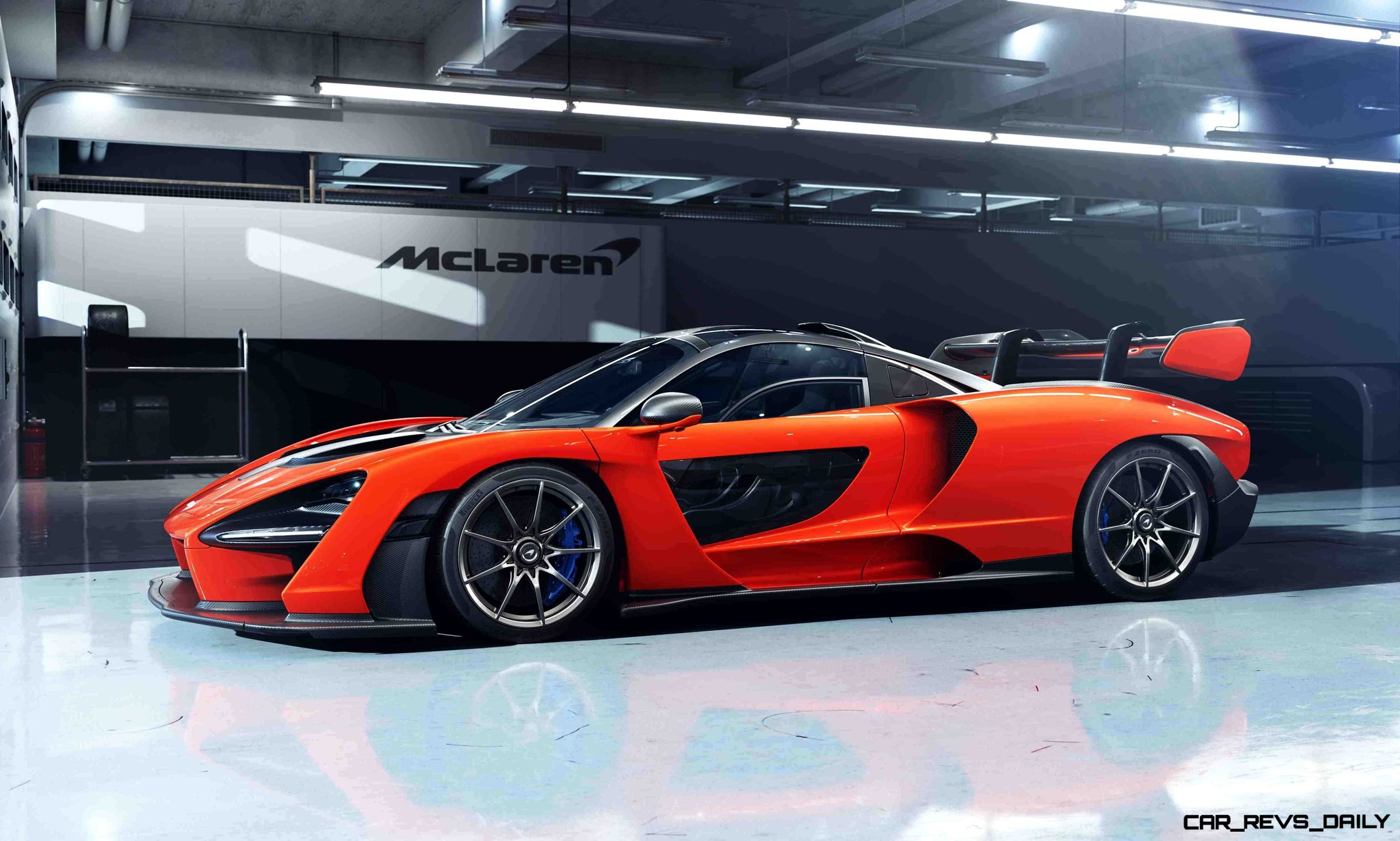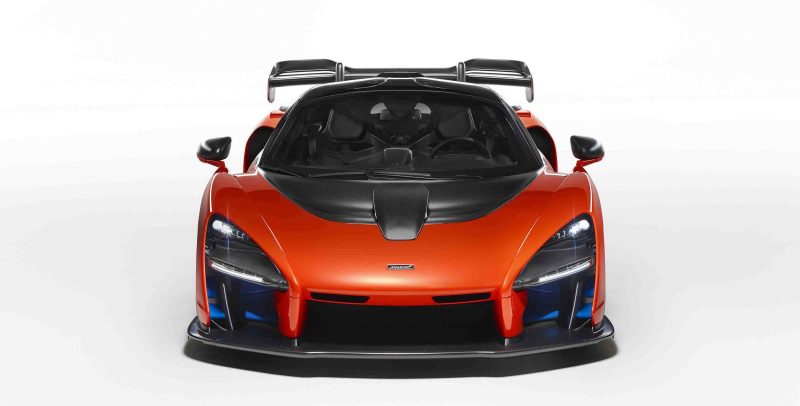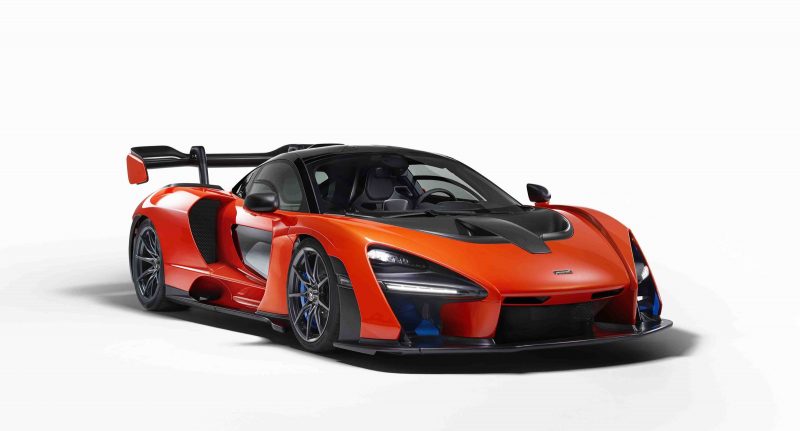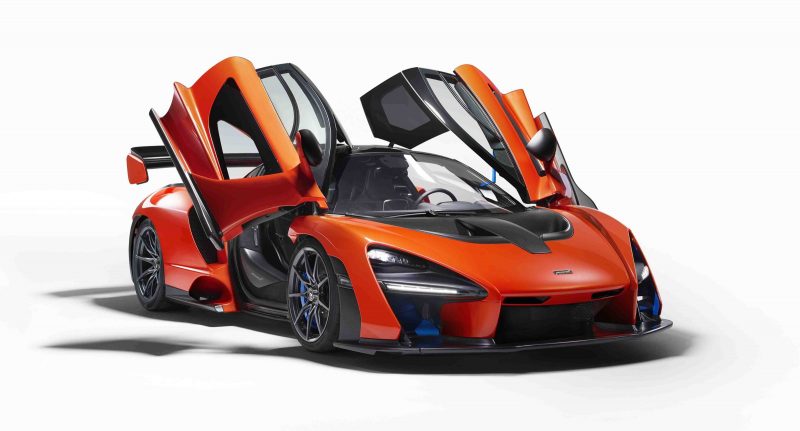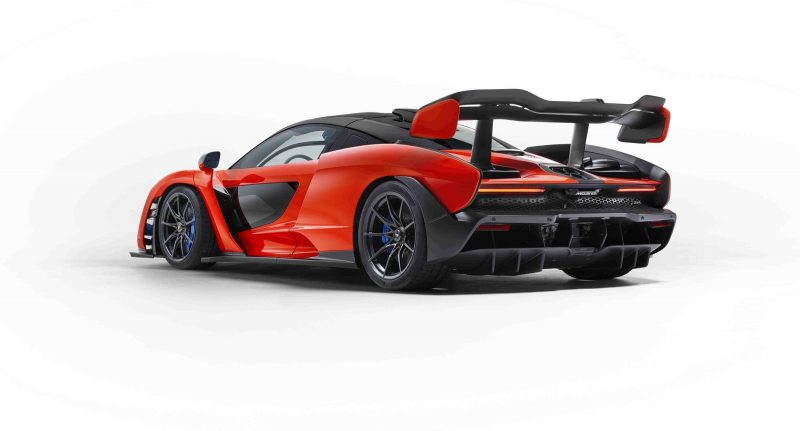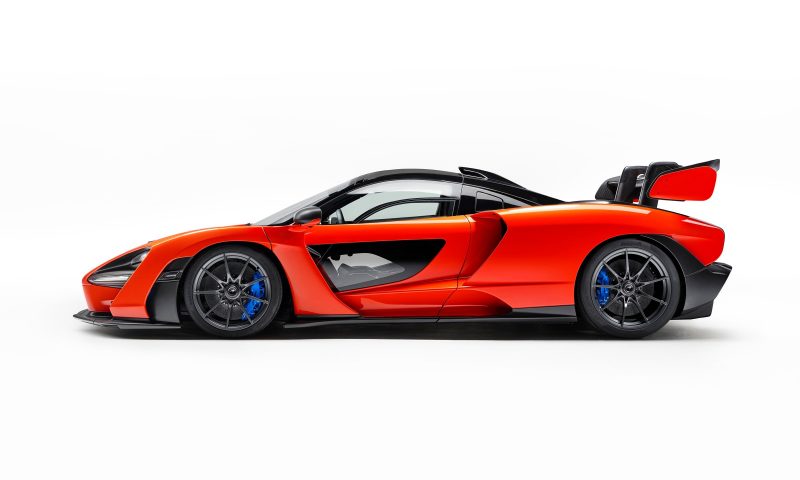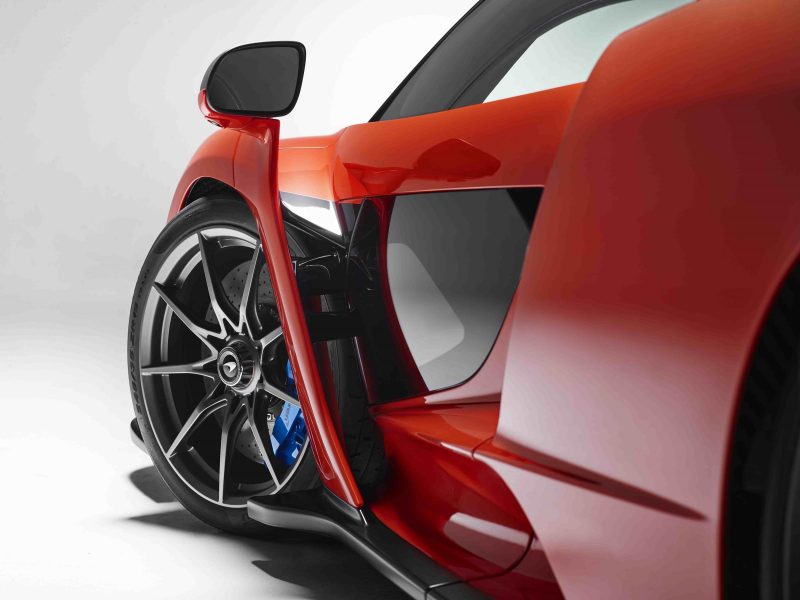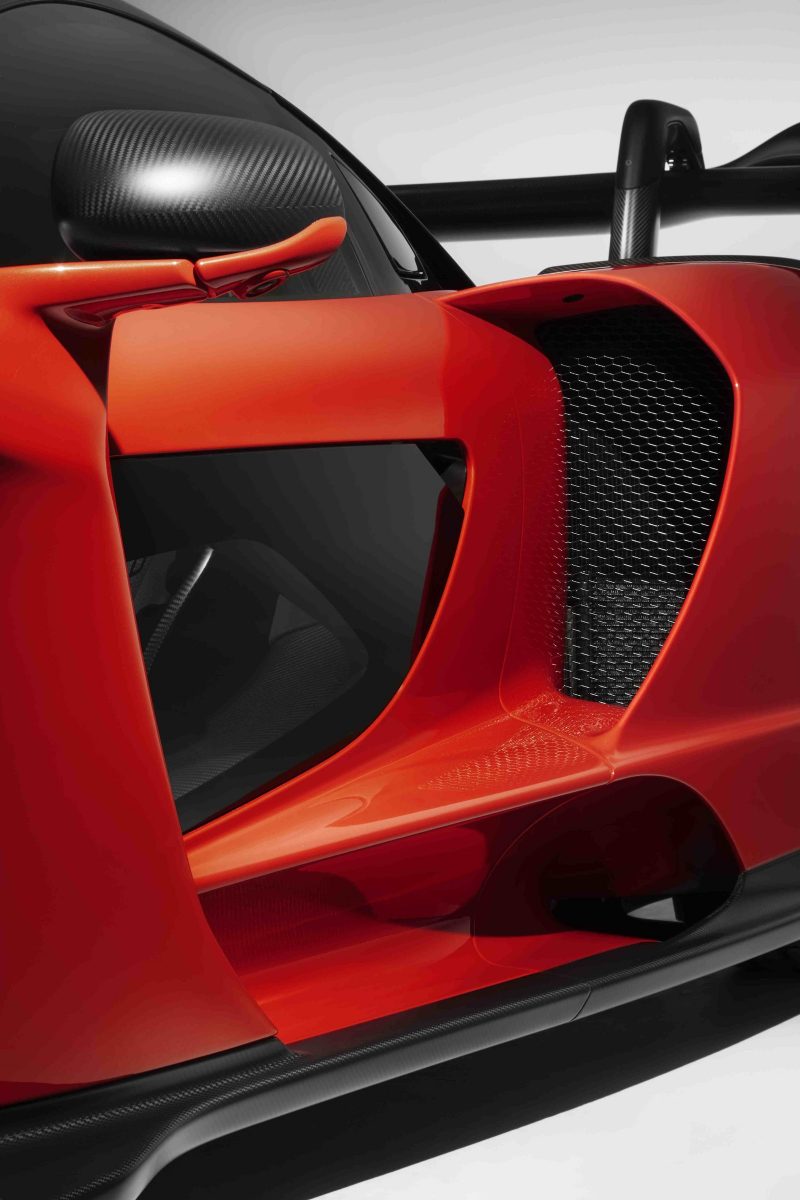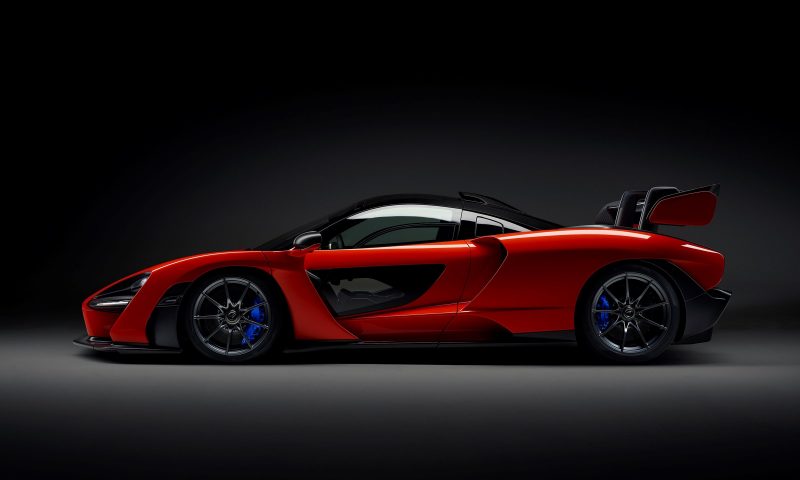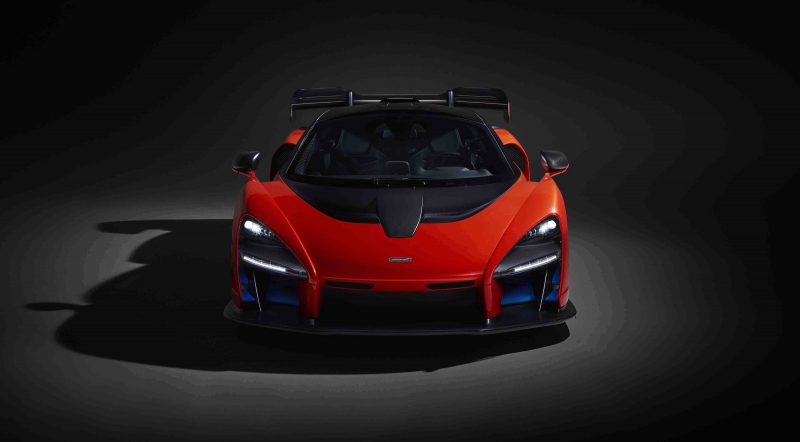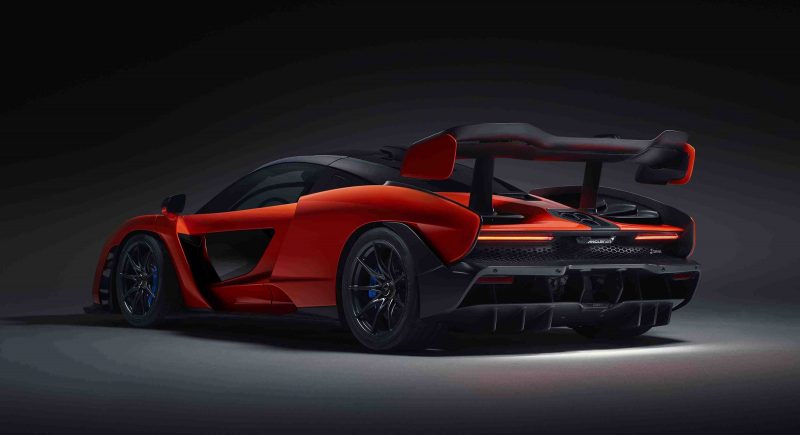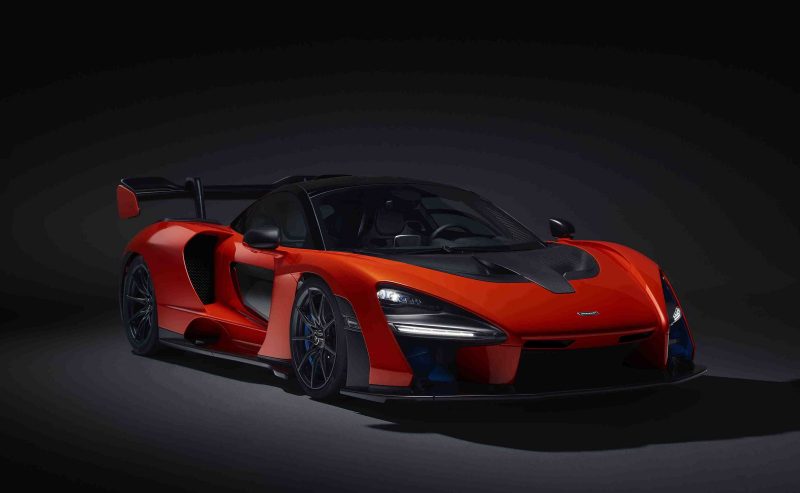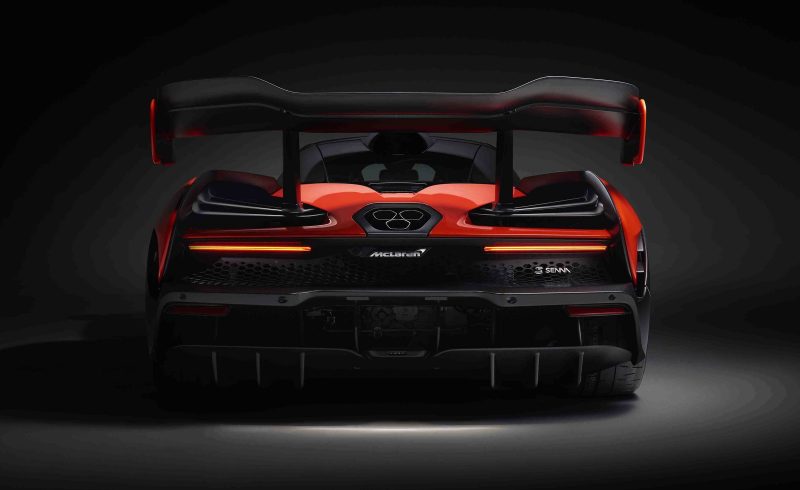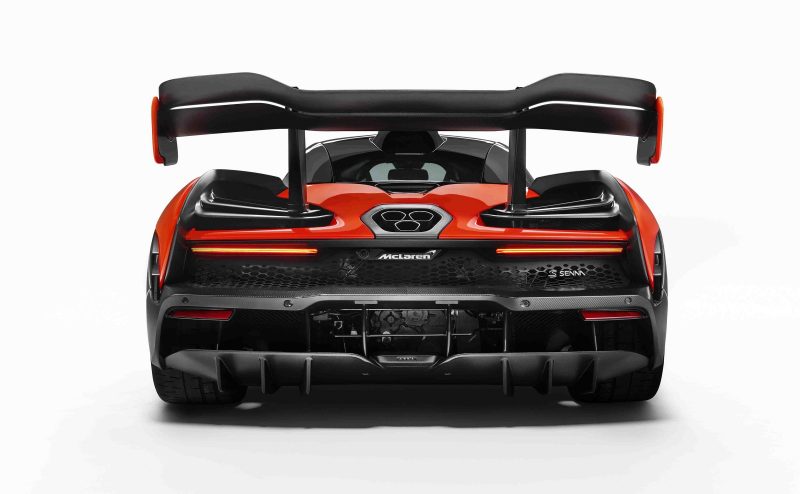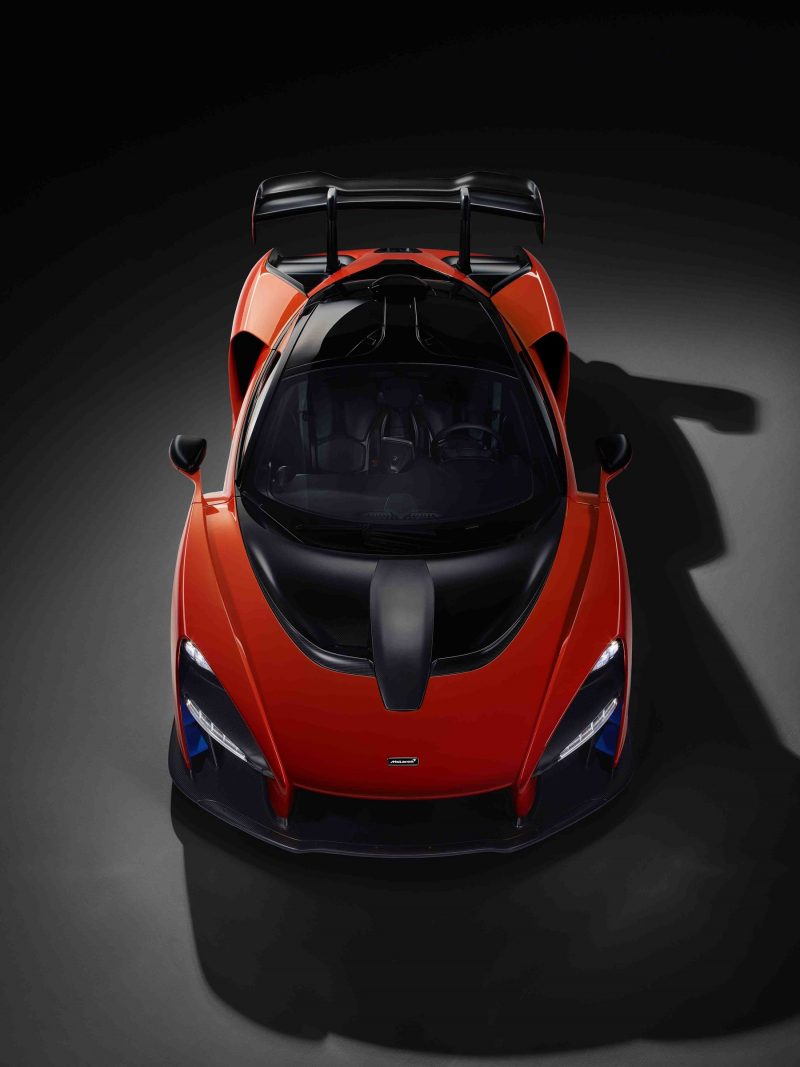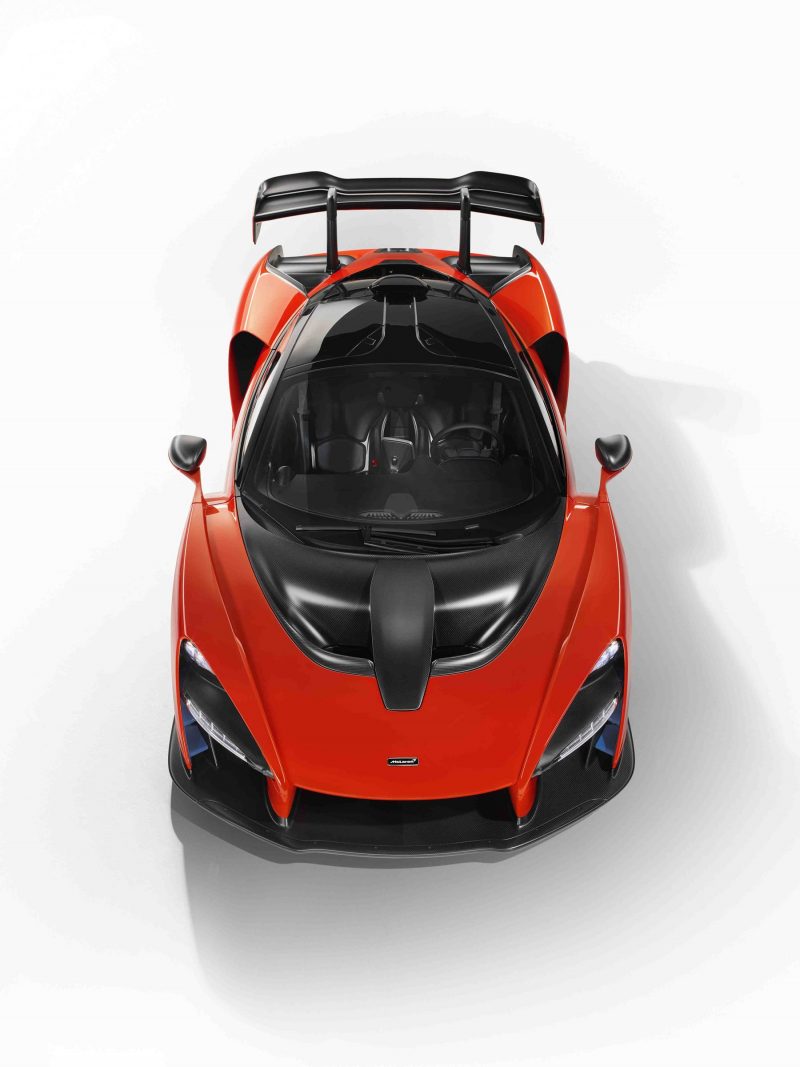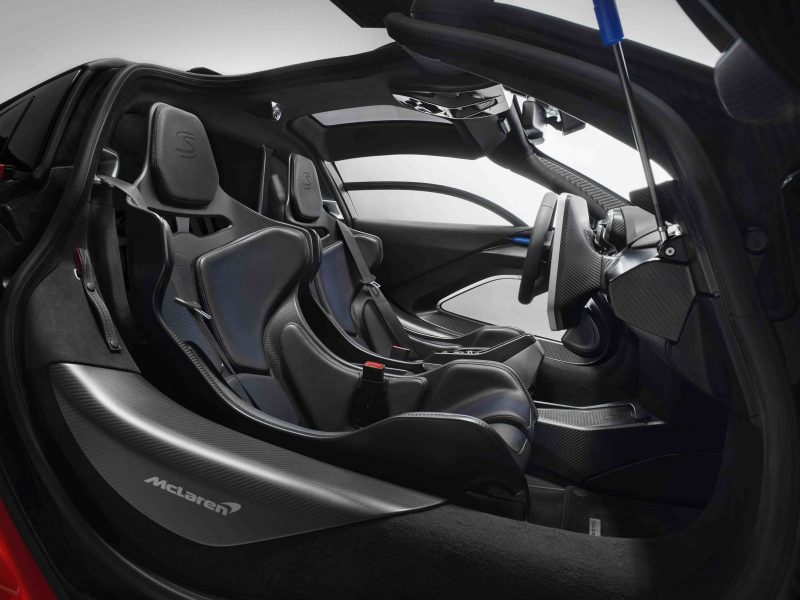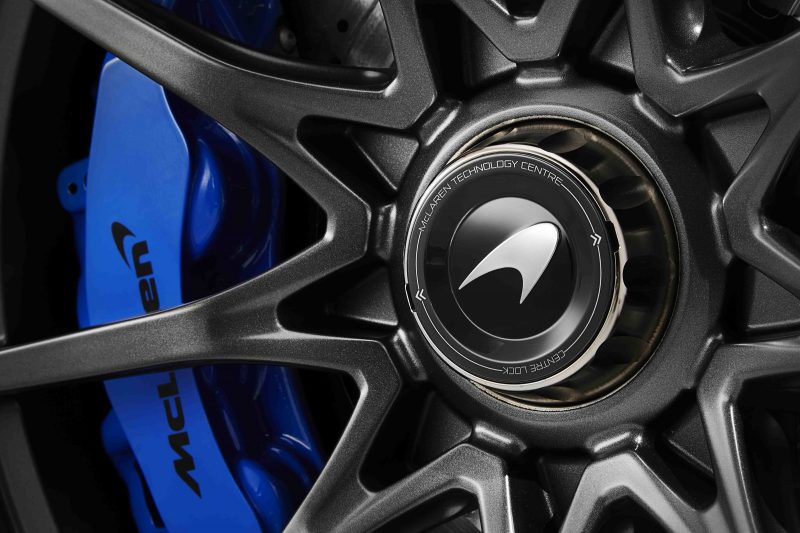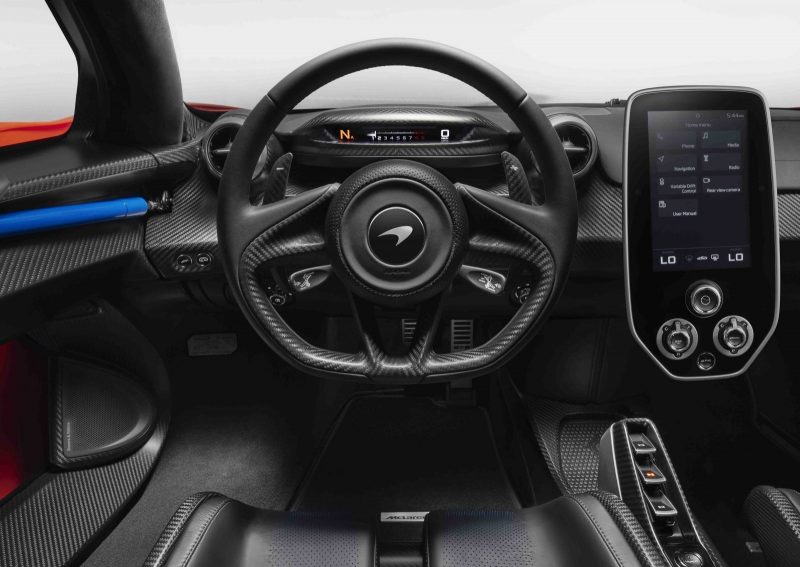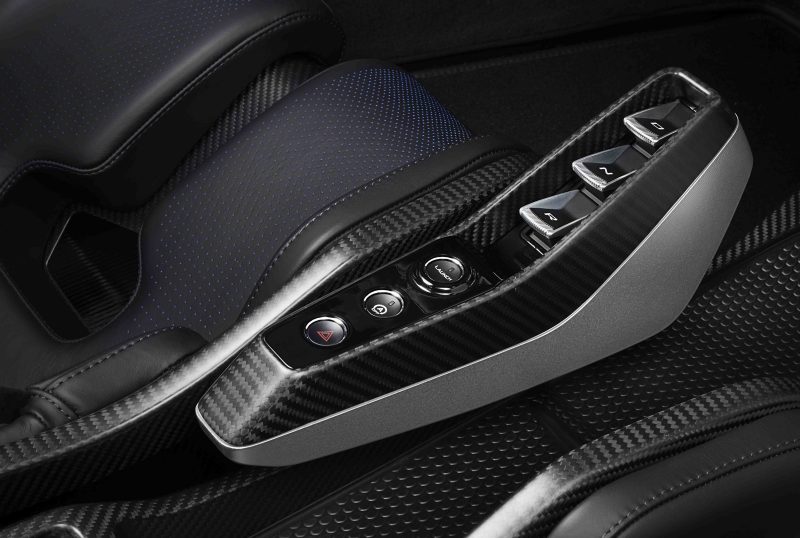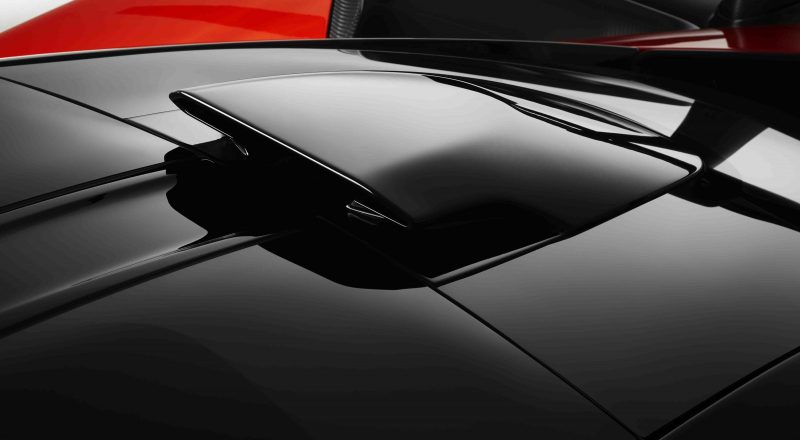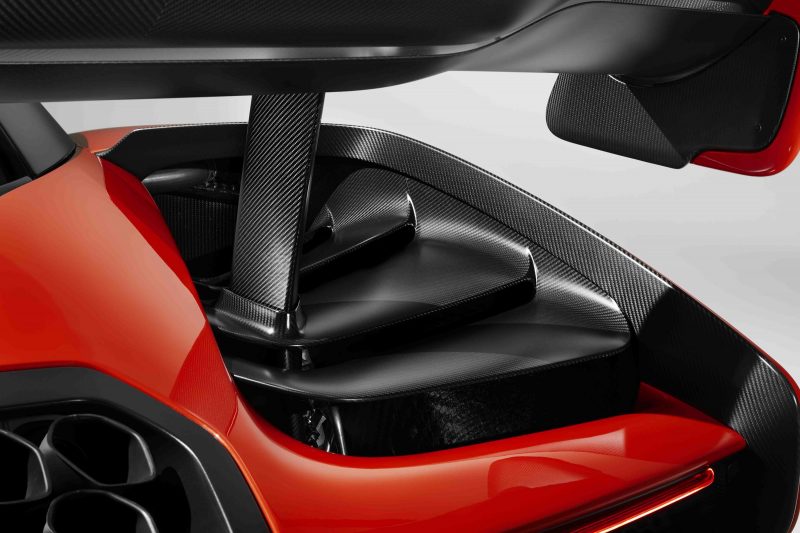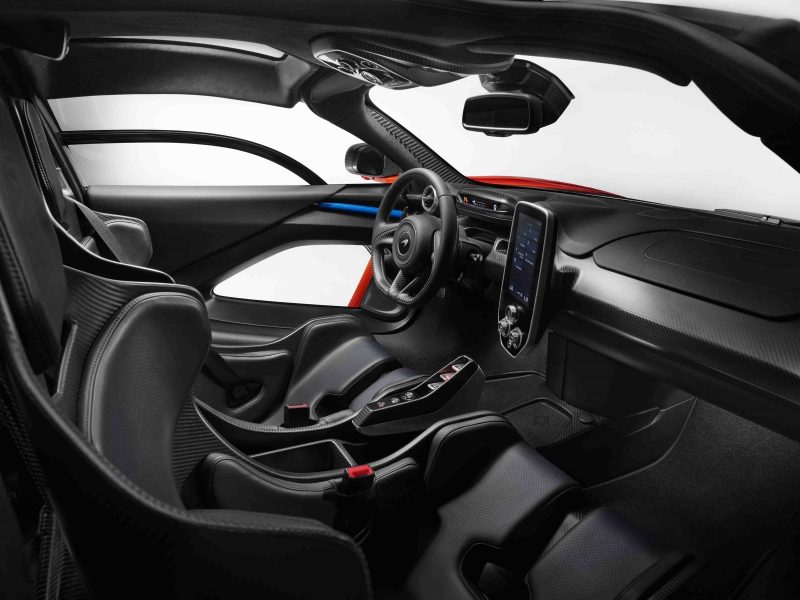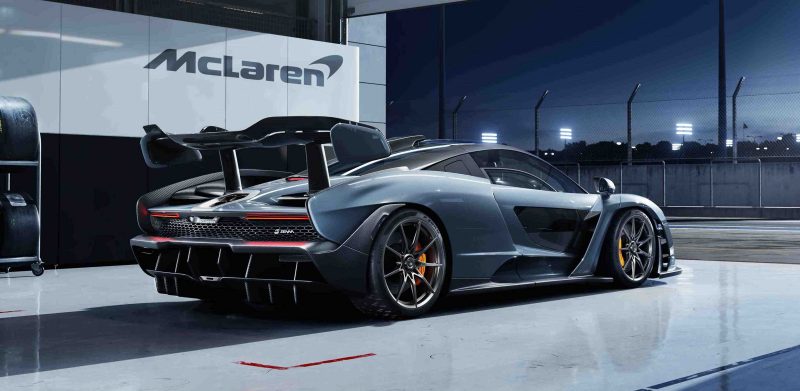McLaren’s P1 successor is here and it is shocking, to say the least.
An unfinished looking cutjob of a design statement is actually on purpose. Senna escews beauty in favor of raw, purist principles. Dimensions shink-wrap the driver, as does the open-air cockpit with glass doors. Fully free-standing front fenders make a slice of air to wrap the cockpit and the reverse + scoop vents ahead and behind the butterfly doors.
Light weight, strict aero and performance like a trackbound rocket. Check out the first photoset and official details from McLaren below.
2018 McLaren SENNA
The McLaren Senna: the ultimate road-legal track car
10 Dec 2017
- New Ultimate Series is the most extreme McLaren road car yet
- Bears the name of legendary Formula 1 driver, Ayrton Senna, honouring its status as the ultimate McLaren track car, legalised for the road
- At 1,198kg (2,641lbs), the lightest McLaren road car since the iconic McLaren F1
- 0-litre twin-turbocharged V8 is the most powerful McLaren road car internal combustion engine ever, with 800PS (789bhp) and 800Nm (590 lb ft)
- Power-to-weight ratio of 668PS-per-tonne delivers savage performance
- The purest connection between driver and car of any road-legal McLaren
- Aggressive appearance epitomises ‘form-follows-function’ McLaren design philosophy
- Mid-engine, rear-wheel-drive chassis – the optimum configuration for dynamic excellence
- Priced at £750,000 including taxes (UK)
- Production limited to 500 units, all hand-assembled at the McLaren Production Centre in Woking, Surrey, England from Q3 2018
“You commit yourself to such a level where there is no compromise. You give everything you have; everything, absolutely everything.”
Ayrton Senna
The McLaren Senna has been designed, engineered and developed with single-minded purpose: to be the ultimate McLaren track-concentrated car for the road. Legalised for road use, but not sanitised to suit it, the new Ultimate Series deliberately compromises McLaren’s trademark breadth of supercar daily usability; instead it provides the purest connection between driver and car, to deliver the most intense circuit experience of any road McLaren.
The technical recipe is classic McLaren Automotive supercar, a pedigree established and earned in the short time elapsed since the pioneering sports and supercar company was founded in 2010, but taken to another level entirely in the McLaren Senna. Ultra-lightweight construction, with carbon fibre chassis and body panels. Mid-mounted, twin-turbocharged V8 McLaren engine. Rear wheel drive. Sophisticated race-derived suspension that delivers an unparalleled blend of control and dynamic balance. Electro-hydraulic steering that rewards accurate inputs and gives the purest feedback. And two seats – but with absolute focus on the importance of the one that the driver occupies.
The carbon fibre Monocage III chassis that forms the core of the McLaren Senna is a further development of the structure that underpins the McLaren 720S and the strongest monocoque ever built by McLaren for a road-legal vehicle. Every body panel is made from carbon fibre, in line with a relentless focus on the weight of every individual component that has resulted in the McLaren Senna being the lightest road-legal McLaren since the iconic F1 road car, at just 1,198kg*.
With maximum power of 800PS (789bhp), the McLaren Senna enjoys a power-to-weight ratio of 668PS per tonne. This statistic immediately underlines the performance credentials of the newcomer to the McLaren Ultimate Series, a product family introduced with the McLaren P1™ that is reserved for the rarest and most extreme McLaren cars.
Unsurprisingly, there are strong echoes in the new McLaren Senna of the incredibly focused philosophy behind the McLaren P1™; where the latter was designed to be the best driver’s car on road and track, the ambition for the McLaren Senna is for it to be the best road-legal track car, setting a new benchmark for circuit excellence with track prowess absolutely taking precedence.
“The McLaren Senna is a car like no other: the personification of McLaren’s motorsport DNA, legalised for road use but designed and developed from the outset to excel on a circuit. Every element of this new Ultimate Series McLaren has an uncompromised performance focus, honed to ensure the purest possible connection between driver and machine and deliver the ultimate track driving experience in the way that only a McLaren can.”
Mike Flewitt, Chief Executive Officer, McLaren Automotive
Given the famous name that this new McLaren bears, its unrivalled extreme performance and dynamic excellence should be no surprise. The legendary Formula 1 racing driver was renowned for his exceptional powers of concentration and single-minded focus on being the best on the track. The McLaren Senna driver is hardwired into the dynamic experience the car delivers. Their connection to the car comes through the steering wheel, the pedals and the seat. Every sensation that comes from driving at speed is precisely communicated, putting the driver in total control.
The indomitable spirit of Ayrton Senna has always been alive at McLaren and the McLaren Senna will further amplify his global legacy and link to the McLaren brand.
“Our family is extremely proud of the naming of the new Ultimate Series McLaren Senna. This is the first project that really connects with Ayrton’s racing spirit and performance. The McLaren Senna honours my uncle because it is so utterly dedicated to delivering a circuit experience that allows a driver to be the best they can possibly be. There is an absolute, seamless connection between car and driver and this pure engagement, these sensory cues that a driver responds to and relies upon, ensure an experience so focused and immersive that you are left in awe of the depths of excellence the McLaren Senna possesses.”
Bruno Senna, racing driver and McLaren Ambassador
Visually, the McLaren Senna shocks. The first impression is of an aggressive, unforgiving machine, organic shapes having given way to a design language that is purposely fragmented in pursuit of absolute performance. With downforce and aerodynamic balance the guiding principles, this car is the purest expression yet of the ‘form follows function’ design philosophy embraced by McLaren.
Viewed from above, the body is nature’s most efficient shape – a teardrop – with body components ‘clipped’ onto the cabin to deliver optimal aerodynamic performance. McLaren’s designers went to extremes by cutting open the ‘shrink-wrapped’ body to reduce weight visually and functionally; while recognisably a McLaren in proportional terms, you cannot follow a single line from the front to the rear without it passing through a functional air intake or vent.
The McLaren Senna introduces a new generation of ground-breaking front and rear active aerodynamics, raising downforce and aero control to an unprecedented level to ensure the performance potential can be fully exploited. Every element of the body design, from the front splitter to the double diffuser at the rear, has been developed to optimise downforce and aerodynamic balance, whether under braking, adjusting the throttle mid corner, or applying power on corner exit. There is also an opportunity for added visual drama, with the front aero blades available finished in one of five ‘By McLaren’ theme specifications that include Azura Blue and McLaren Orange. The same linked accent colour can also feature on the brake calipers, visible door gas struts and seat trims.
Cooling requirements played an equally crucial role in the overall design of the McLaren Senna: the rear clamshell, for example, was born from the twin demands of aerodynamic and cooling performance, with prominent ‘gurney’ flaps ahead of a succession of stepped louvres directing air away from the rear deck and down the sides of the body. The resulting area of low pressure draws hot air out from the high-temperature radiators and engine bay, with the louvres ensuring that the airflow does not impact the efficiency of the rear wing. The ‘slash cut’ finishers of the unique Inconel and titanium exhaust exit through the lowest rear deck (measured at the trailing edge) of any McLaren road car, the angle of the pipes directing exhaust gas away from the rear wing. The slim, rear LED taillights have been subject to the same exacting attention to detail as the headlights and every other aero-relevant component, the single-blade design minimising interruptions to airflow.

Tom Burkart is the founder and managing editor of Car-Revs-Daily.com, an innovative and rapidly-expanding automotive news magazine.
He holds a Journalism JBA degree from the University of Wisconsin – Madison. Tom currently resides in Charleston, South Carolina with his two amazing dogs, Drake and Tank.
Mr. Burkart is available for all questions and concerns by email Tom(at)car-revs-daily.com.

